Quick filters:
Hongshan dragon Stock Photos and Images
 Half of an ornament in the shape of a dragon. Neolithic, Hongshan culture, about 3500 BC. Stock Photohttps://www.alamy.com/image-license-details/?v=1https://www.alamy.com/stock-photo-half-of-an-ornament-in-the-shape-of-a-dragon-neolithic-hongshan-culture-104951158.html
Half of an ornament in the shape of a dragon. Neolithic, Hongshan culture, about 3500 BC. Stock Photohttps://www.alamy.com/image-license-details/?v=1https://www.alamy.com/stock-photo-half-of-an-ornament-in-the-shape-of-a-dragon-neolithic-hongshan-culture-104951158.htmlRMG2MX7J–Half of an ornament in the shape of a dragon. Neolithic, Hongshan culture, about 3500 BC.
 Yellowish jade pig-dragon pendant, Neolithic, Hongshan culture, North China, c3500 BC-2200 BC. Artist: Unknown Stock Photohttps://www.alamy.com/image-license-details/?v=1https://www.alamy.com/yellowish-jade-pig-dragon-pendant-neolithic-hongshan-culture-north-image60085402.html
Yellowish jade pig-dragon pendant, Neolithic, Hongshan culture, North China, c3500 BC-2200 BC. Artist: Unknown Stock Photohttps://www.alamy.com/image-license-details/?v=1https://www.alamy.com/yellowish-jade-pig-dragon-pendant-neolithic-hongshan-culture-north-image60085402.htmlRMDDN3F6–Yellowish jade pig-dragon pendant, Neolithic, Hongshan culture, North China, c3500 BC-2200 BC. Artist: Unknown
 Jade Pig-Dragon, Hongshan Culture, Jade gallery, Palace Museum, Taipei, Taiwan Stock Photohttps://www.alamy.com/image-license-details/?v=1https://www.alamy.com/jade-pig-dragon-hongshan-culture-jade-gallery-palace-museum-taipei-taiwan-image573375946.html
Jade Pig-Dragon, Hongshan Culture, Jade gallery, Palace Museum, Taipei, Taiwan Stock Photohttps://www.alamy.com/image-license-details/?v=1https://www.alamy.com/jade-pig-dragon-hongshan-culture-jade-gallery-palace-museum-taipei-taiwan-image573375946.htmlRM2T8RETA–Jade Pig-Dragon, Hongshan Culture, Jade gallery, Palace Museum, Taipei, Taiwan
 (240922) -- CHIFENG, Sept. 22, 2024 (Xinhua) -- This undated file photo shows a circular tomb at a stone tomb site in the city of Chifeng, north China's Inner Mongolia Autonomous Region. Chinese archaeologists have unearthed the largest jade dragon ever discovered from the Hongshan culture, an important part of the Neolithic Age, at a stone tomb site in the city of Chifeng, north China's Inner Mongolia Autonomous Region, according to the regional institute of cultural relics and archaeology. Measuring 15.8 cm long, 9.5 cm wide, and 3 cm thick, the artifact was found at a site featuring a cir Stock Photohttps://www.alamy.com/image-license-details/?v=1https://www.alamy.com/240922-chifeng-sept-22-2024-xinhua-this-undated-file-photo-shows-a-circular-tomb-at-a-stone-tomb-site-in-the-city-of-chifeng-north-chinas-inner-mongolia-autonomous-region-chinese-archaeologists-have-unearthed-the-largest-jade-dragon-ever-discovered-from-the-hongshan-culture-an-important-part-of-the-neolithic-age-at-a-stone-tomb-site-in-the-city-of-chifeng-north-chinas-inner-mongolia-autonomous-region-according-to-the-regional-institute-of-cultural-relics-and-archaeology-measuring-158-cm-long-95-cm-wide-and-3-cm-thick-the-artifact-was-found-at-a-site-featuring-a-cir-image623049539.html
(240922) -- CHIFENG, Sept. 22, 2024 (Xinhua) -- This undated file photo shows a circular tomb at a stone tomb site in the city of Chifeng, north China's Inner Mongolia Autonomous Region. Chinese archaeologists have unearthed the largest jade dragon ever discovered from the Hongshan culture, an important part of the Neolithic Age, at a stone tomb site in the city of Chifeng, north China's Inner Mongolia Autonomous Region, according to the regional institute of cultural relics and archaeology. Measuring 15.8 cm long, 9.5 cm wide, and 3 cm thick, the artifact was found at a site featuring a cir Stock Photohttps://www.alamy.com/image-license-details/?v=1https://www.alamy.com/240922-chifeng-sept-22-2024-xinhua-this-undated-file-photo-shows-a-circular-tomb-at-a-stone-tomb-site-in-the-city-of-chifeng-north-chinas-inner-mongolia-autonomous-region-chinese-archaeologists-have-unearthed-the-largest-jade-dragon-ever-discovered-from-the-hongshan-culture-an-important-part-of-the-neolithic-age-at-a-stone-tomb-site-in-the-city-of-chifeng-north-chinas-inner-mongolia-autonomous-region-according-to-the-regional-institute-of-cultural-relics-and-archaeology-measuring-158-cm-long-95-cm-wide-and-3-cm-thick-the-artifact-was-found-at-a-site-featuring-a-cir-image623049539.htmlRM2Y5JA17–(240922) -- CHIFENG, Sept. 22, 2024 (Xinhua) -- This undated file photo shows a circular tomb at a stone tomb site in the city of Chifeng, north China's Inner Mongolia Autonomous Region. Chinese archaeologists have unearthed the largest jade dragon ever discovered from the Hongshan culture, an important part of the Neolithic Age, at a stone tomb site in the city of Chifeng, north China's Inner Mongolia Autonomous Region, according to the regional institute of cultural relics and archaeology. Measuring 15.8 cm long, 9.5 cm wide, and 3 cm thick, the artifact was found at a site featuring a cir
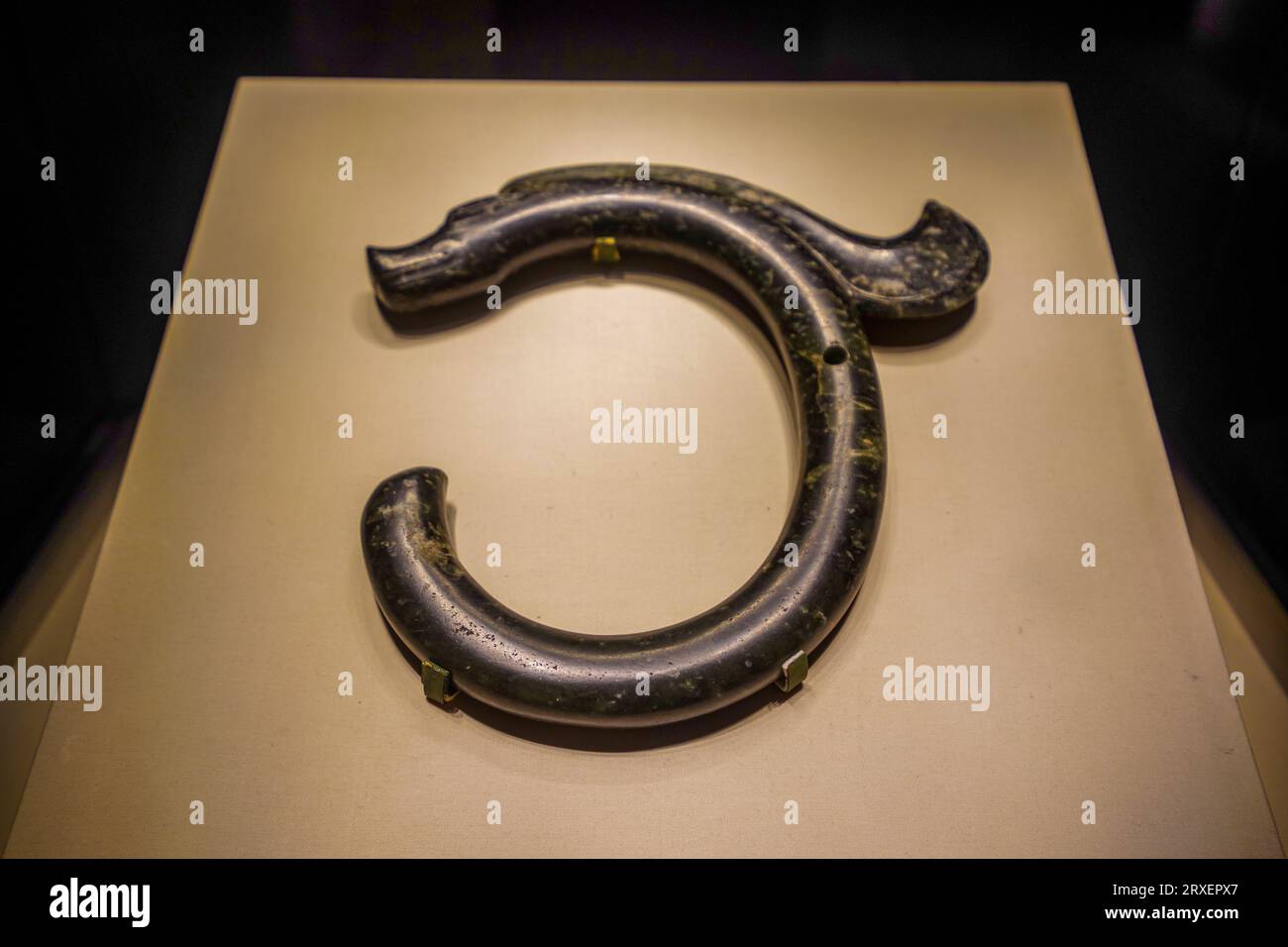 Beijing China, February 16, 2023: Hongshan culture Jade Dragon in the National Museum of China. Stock Photohttps://www.alamy.com/image-license-details/?v=1https://www.alamy.com/beijing-china-february-16-2023-hongshan-culture-jade-dragon-in-the-national-museum-of-china-image567038143.html
Beijing China, February 16, 2023: Hongshan culture Jade Dragon in the National Museum of China. Stock Photohttps://www.alamy.com/image-license-details/?v=1https://www.alamy.com/beijing-china-february-16-2023-hongshan-culture-jade-dragon-in-the-national-museum-of-china-image567038143.htmlRF2RXEPX7–Beijing China, February 16, 2023: Hongshan culture Jade Dragon in the National Museum of China.
 BEIJING, CHINA - JANUARY 26, 2022 - Jade Dragon (Hongshan Culture in the New Era) is on display at 'Why China' exhibition in Mandarin Hall of the Pala Stock Photohttps://www.alamy.com/image-license-details/?v=1https://www.alamy.com/beijing-china-january-26-2022-jade-dragon-hongshan-culture-in-the-new-era-is-on-display-at-why-china-exhibition-in-mandarin-hall-of-the-pala-image458673295.html
BEIJING, CHINA - JANUARY 26, 2022 - Jade Dragon (Hongshan Culture in the New Era) is on display at 'Why China' exhibition in Mandarin Hall of the Pala Stock Photohttps://www.alamy.com/image-license-details/?v=1https://www.alamy.com/beijing-china-january-26-2022-jade-dragon-hongshan-culture-in-the-new-era-is-on-display-at-why-china-exhibition-in-mandarin-hall-of-the-pala-image458673295.htmlRM2HJ6AD3–BEIJING, CHINA - JANUARY 26, 2022 - Jade Dragon (Hongshan Culture in the New Era) is on display at 'Why China' exhibition in Mandarin Hall of the Pala
 Hongshan culture jade dragon palace during the Stone Age Stock Photohttps://www.alamy.com/image-license-details/?v=1https://www.alamy.com/hongshan-culture-jade-dragon-palace-during-the-stone-age-image490394668.html
Hongshan culture jade dragon palace during the Stone Age Stock Photohttps://www.alamy.com/image-license-details/?v=1https://www.alamy.com/hongshan-culture-jade-dragon-palace-during-the-stone-age-image490394668.htmlRF2KDRBB8–Hongshan culture jade dragon palace during the Stone Age
 Broken Bridge - Hongshan Ancient Bridge on the Minjiang River, in 1985, after the birth of the new bridge, the ancient pier was removed to protect the riverbed, avoiding the fate of being blown up. In 2005, after Typhoon Dragon King crossed the border, eight piers were destroyed, and now there are only 16 left, becoming a broken bridge. Stock Photohttps://www.alamy.com/image-license-details/?v=1https://www.alamy.com/broken-bridge-hongshan-ancient-bridge-on-the-minjiang-river-in-1985-after-the-birth-of-the-new-bridge-the-ancient-pier-was-removed-to-protect-the-riverbed-avoiding-the-fate-of-being-blown-up-in-2005-after-typhoon-dragon-king-crossed-the-border-eight-piers-were-destroyed-and-now-there-are-only-16-left-becoming-a-broken-bridge-image248268247.html
Broken Bridge - Hongshan Ancient Bridge on the Minjiang River, in 1985, after the birth of the new bridge, the ancient pier was removed to protect the riverbed, avoiding the fate of being blown up. In 2005, after Typhoon Dragon King crossed the border, eight piers were destroyed, and now there are only 16 left, becoming a broken bridge. Stock Photohttps://www.alamy.com/image-license-details/?v=1https://www.alamy.com/broken-bridge-hongshan-ancient-bridge-on-the-minjiang-river-in-1985-after-the-birth-of-the-new-bridge-the-ancient-pier-was-removed-to-protect-the-riverbed-avoiding-the-fate-of-being-blown-up-in-2005-after-typhoon-dragon-king-crossed-the-border-eight-piers-were-destroyed-and-now-there-are-only-16-left-becoming-a-broken-bridge-image248268247.htmlRFTBWGK3–Broken Bridge - Hongshan Ancient Bridge on the Minjiang River, in 1985, after the birth of the new bridge, the ancient pier was removed to protect the riverbed, avoiding the fate of being blown up. In 2005, after Typhoon Dragon King crossed the border, eight piers were destroyed, and now there are only 16 left, becoming a broken bridge.
 Broken Bridge - Hongshan Ancient Bridge on the Minjiang River, in 1985, after the birth of the new bridge, the ancient pier was removed to protect the riverbed, avoiding the fate of being blown up. In 2005, after Typhoon Dragon King crossed the border, eight piers were destroyed, and now there are only 16 left, becoming a broken bridge. Stock Photohttps://www.alamy.com/image-license-details/?v=1https://www.alamy.com/broken-bridge-hongshan-ancient-bridge-on-the-minjiang-river-in-1985-after-the-birth-of-the-new-bridge-the-ancient-pier-was-removed-to-protect-the-riverbed-avoiding-the-fate-of-being-blown-up-in-2005-after-typhoon-dragon-king-crossed-the-border-eight-piers-were-destroyed-and-now-there-are-only-16-left-becoming-a-broken-bridge-image248546822.html
Broken Bridge - Hongshan Ancient Bridge on the Minjiang River, in 1985, after the birth of the new bridge, the ancient pier was removed to protect the riverbed, avoiding the fate of being blown up. In 2005, after Typhoon Dragon King crossed the border, eight piers were destroyed, and now there are only 16 left, becoming a broken bridge. Stock Photohttps://www.alamy.com/image-license-details/?v=1https://www.alamy.com/broken-bridge-hongshan-ancient-bridge-on-the-minjiang-river-in-1985-after-the-birth-of-the-new-bridge-the-ancient-pier-was-removed-to-protect-the-riverbed-avoiding-the-fate-of-being-blown-up-in-2005-after-typhoon-dragon-king-crossed-the-border-eight-piers-were-destroyed-and-now-there-are-only-16-left-becoming-a-broken-bridge-image248546822.htmlRFTCA806–Broken Bridge - Hongshan Ancient Bridge on the Minjiang River, in 1985, after the birth of the new bridge, the ancient pier was removed to protect the riverbed, avoiding the fate of being blown up. In 2005, after Typhoon Dragon King crossed the border, eight piers were destroyed, and now there are only 16 left, becoming a broken bridge.
 Half of an ornament in the shape of a dragon. Neolithic, Hongshan culture, about 3500 BC. Stock Photohttps://www.alamy.com/image-license-details/?v=1https://www.alamy.com/stock-photo-half-of-an-ornament-in-the-shape-of-a-dragon-neolithic-hongshan-culture-104951880.html
Half of an ornament in the shape of a dragon. Neolithic, Hongshan culture, about 3500 BC. Stock Photohttps://www.alamy.com/image-license-details/?v=1https://www.alamy.com/stock-photo-half-of-an-ornament-in-the-shape-of-a-dragon-neolithic-hongshan-culture-104951880.htmlRMG2MY5C–Half of an ornament in the shape of a dragon. Neolithic, Hongshan culture, about 3500 BC.
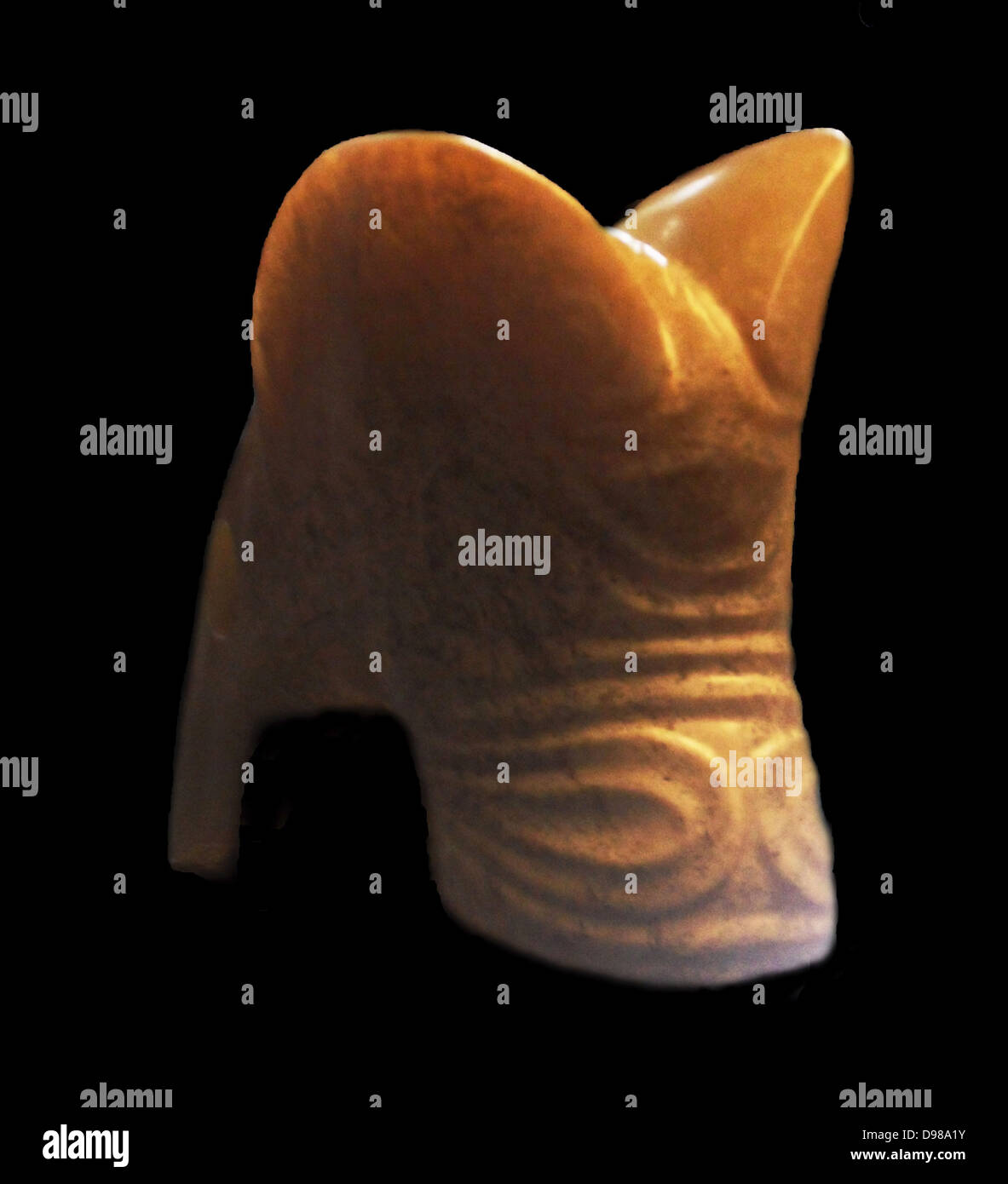 Hongshan is the term used to describe Neolithic cultures of the Northeast, in the areas of Liaoning and Inner Mongolia. The most skilfully made objects from this area are jades in the shape of creatures. Half of an ornament in the shape of a dragon. Neolithic, Hongshan culture, about 3500 BC. Stock Photohttps://www.alamy.com/image-license-details/?v=1https://www.alamy.com/stock-photo-hongshan-is-the-term-used-to-describe-neolithic-cultures-of-the-northeast-57346519.html
Hongshan is the term used to describe Neolithic cultures of the Northeast, in the areas of Liaoning and Inner Mongolia. The most skilfully made objects from this area are jades in the shape of creatures. Half of an ornament in the shape of a dragon. Neolithic, Hongshan culture, about 3500 BC. Stock Photohttps://www.alamy.com/image-license-details/?v=1https://www.alamy.com/stock-photo-hongshan-is-the-term-used-to-describe-neolithic-cultures-of-the-northeast-57346519.htmlRMD98A1Y–Hongshan is the term used to describe Neolithic cultures of the Northeast, in the areas of Liaoning and Inner Mongolia. The most skilfully made objects from this area are jades in the shape of creatures. Half of an ornament in the shape of a dragon. Neolithic, Hongshan culture, about 3500 BC.
 Jade Pig-Dragon, Hongshan Culture, Jade gallery, Palace Museum, Taipei, Taiwan Stock Photohttps://www.alamy.com/image-license-details/?v=1https://www.alamy.com/jade-pig-dragon-hongshan-culture-jade-gallery-palace-museum-taipei-taiwan-image573383255.html
Jade Pig-Dragon, Hongshan Culture, Jade gallery, Palace Museum, Taipei, Taiwan Stock Photohttps://www.alamy.com/image-license-details/?v=1https://www.alamy.com/jade-pig-dragon-hongshan-culture-jade-gallery-palace-museum-taipei-taiwan-image573383255.htmlRM2T8RT5B–Jade Pig-Dragon, Hongshan Culture, Jade gallery, Palace Museum, Taipei, Taiwan
 (240922) -- CHIFENG, Sept. 22, 2024 (Xinhua) -- This undated file photo shows jade wares unearthed at a stone tomb site in the city of Chifeng, north China's Inner Mongolia Autonomous Region. Chinese archaeologists have unearthed the largest jade dragon ever discovered from the Hongshan culture, an important part of the Neolithic Age, at a stone tomb site in the city of Chifeng, north China's Inner Mongolia Autonomous Region, according to the regional institute of cultural relics and archaeology. Measuring 15.8 cm long, 9.5 cm wide, and 3 cm thick, the artifact was found at a site featuring Stock Photohttps://www.alamy.com/image-license-details/?v=1https://www.alamy.com/240922-chifeng-sept-22-2024-xinhua-this-undated-file-photo-shows-jade-wares-unearthed-at-a-stone-tomb-site-in-the-city-of-chifeng-north-chinas-inner-mongolia-autonomous-region-chinese-archaeologists-have-unearthed-the-largest-jade-dragon-ever-discovered-from-the-hongshan-culture-an-important-part-of-the-neolithic-age-at-a-stone-tomb-site-in-the-city-of-chifeng-north-chinas-inner-mongolia-autonomous-region-according-to-the-regional-institute-of-cultural-relics-and-archaeology-measuring-158-cm-long-95-cm-wide-and-3-cm-thick-the-artifact-was-found-at-a-site-featuring-image623049545.html
(240922) -- CHIFENG, Sept. 22, 2024 (Xinhua) -- This undated file photo shows jade wares unearthed at a stone tomb site in the city of Chifeng, north China's Inner Mongolia Autonomous Region. Chinese archaeologists have unearthed the largest jade dragon ever discovered from the Hongshan culture, an important part of the Neolithic Age, at a stone tomb site in the city of Chifeng, north China's Inner Mongolia Autonomous Region, according to the regional institute of cultural relics and archaeology. Measuring 15.8 cm long, 9.5 cm wide, and 3 cm thick, the artifact was found at a site featuring Stock Photohttps://www.alamy.com/image-license-details/?v=1https://www.alamy.com/240922-chifeng-sept-22-2024-xinhua-this-undated-file-photo-shows-jade-wares-unearthed-at-a-stone-tomb-site-in-the-city-of-chifeng-north-chinas-inner-mongolia-autonomous-region-chinese-archaeologists-have-unearthed-the-largest-jade-dragon-ever-discovered-from-the-hongshan-culture-an-important-part-of-the-neolithic-age-at-a-stone-tomb-site-in-the-city-of-chifeng-north-chinas-inner-mongolia-autonomous-region-according-to-the-regional-institute-of-cultural-relics-and-archaeology-measuring-158-cm-long-95-cm-wide-and-3-cm-thick-the-artifact-was-found-at-a-site-featuring-image623049545.htmlRM2Y5JA1D–(240922) -- CHIFENG, Sept. 22, 2024 (Xinhua) -- This undated file photo shows jade wares unearthed at a stone tomb site in the city of Chifeng, north China's Inner Mongolia Autonomous Region. Chinese archaeologists have unearthed the largest jade dragon ever discovered from the Hongshan culture, an important part of the Neolithic Age, at a stone tomb site in the city of Chifeng, north China's Inner Mongolia Autonomous Region, according to the regional institute of cultural relics and archaeology. Measuring 15.8 cm long, 9.5 cm wide, and 3 cm thick, the artifact was found at a site featuring
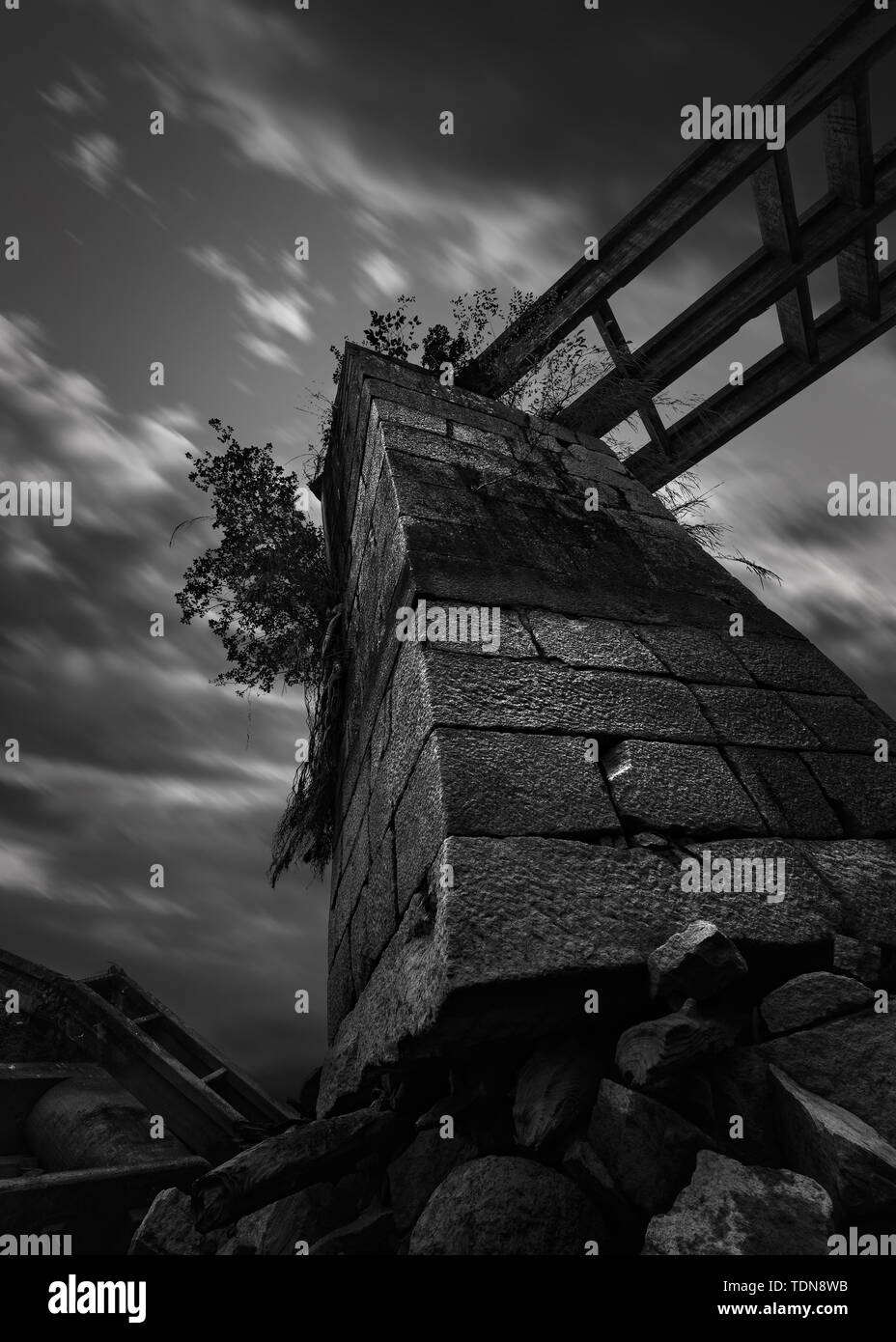 Broken Bridge - Hongshan Ancient Bridge on the Minjiang River, in 1985, after the birth of the new bridge, the ancient pier was removed to protect the riverbed, avoiding the fate of being blown up. In 2005, after Typhoon Dragon King crossed the border, eight piers were destroyed, and now there are only 16 left, becoming a broken bridge. Stock Photohttps://www.alamy.com/image-license-details/?v=1https://www.alamy.com/broken-bridge-hongshan-ancient-bridge-on-the-minjiang-river-in-1985-after-the-birth-of-the-new-bridge-the-ancient-pier-was-removed-to-protect-the-riverbed-avoiding-the-fate-of-being-blown-up-in-2005-after-typhoon-dragon-king-crossed-the-border-eight-piers-were-destroyed-and-now-there-are-only-16-left-becoming-a-broken-bridge-image249403655.html
Broken Bridge - Hongshan Ancient Bridge on the Minjiang River, in 1985, after the birth of the new bridge, the ancient pier was removed to protect the riverbed, avoiding the fate of being blown up. In 2005, after Typhoon Dragon King crossed the border, eight piers were destroyed, and now there are only 16 left, becoming a broken bridge. Stock Photohttps://www.alamy.com/image-license-details/?v=1https://www.alamy.com/broken-bridge-hongshan-ancient-bridge-on-the-minjiang-river-in-1985-after-the-birth-of-the-new-bridge-the-ancient-pier-was-removed-to-protect-the-riverbed-avoiding-the-fate-of-being-blown-up-in-2005-after-typhoon-dragon-king-crossed-the-border-eight-piers-were-destroyed-and-now-there-are-only-16-left-becoming-a-broken-bridge-image249403655.htmlRFTDN8WB–Broken Bridge - Hongshan Ancient Bridge on the Minjiang River, in 1985, after the birth of the new bridge, the ancient pier was removed to protect the riverbed, avoiding the fate of being blown up. In 2005, after Typhoon Dragon King crossed the border, eight piers were destroyed, and now there are only 16 left, becoming a broken bridge.
 Jade Dragon Pei Pendant, Hongshan Culture, Jade gallery, Palace Museum, Taipei, Taiwan Stock Photohttps://www.alamy.com/image-license-details/?v=1https://www.alamy.com/jade-dragon-pei-pendant-hongshan-culture-jade-gallery-palace-museum-taipei-taiwan-image573375957.html
Jade Dragon Pei Pendant, Hongshan Culture, Jade gallery, Palace Museum, Taipei, Taiwan Stock Photohttps://www.alamy.com/image-license-details/?v=1https://www.alamy.com/jade-dragon-pei-pendant-hongshan-culture-jade-gallery-palace-museum-taipei-taiwan-image573375957.htmlRM2T8RETN–Jade Dragon Pei Pendant, Hongshan Culture, Jade gallery, Palace Museum, Taipei, Taiwan
 (240922) -- CHIFENG, Sept. 22, 2024 (Xinhua) -- This undated file photo shows archaeologists working at a stone tomb site in the city of Chifeng, north China's Inner Mongolia Autonomous Region. Chinese archaeologists have unearthed the largest jade dragon ever discovered from the Hongshan culture, an important part of the Neolithic Age, at a stone tomb site in the city of Chifeng, north China's Inner Mongolia Autonomous Region, according to the regional institute of cultural relics and archaeology. Measuring 15.8 cm long, 9.5 cm wide, and 3 cm thick, the artifact was found at a site featurin Stock Photohttps://www.alamy.com/image-license-details/?v=1https://www.alamy.com/240922-chifeng-sept-22-2024-xinhua-this-undated-file-photo-shows-archaeologists-working-at-a-stone-tomb-site-in-the-city-of-chifeng-north-chinas-inner-mongolia-autonomous-region-chinese-archaeologists-have-unearthed-the-largest-jade-dragon-ever-discovered-from-the-hongshan-culture-an-important-part-of-the-neolithic-age-at-a-stone-tomb-site-in-the-city-of-chifeng-north-chinas-inner-mongolia-autonomous-region-according-to-the-regional-institute-of-cultural-relics-and-archaeology-measuring-158-cm-long-95-cm-wide-and-3-cm-thick-the-artifact-was-found-at-a-site-featurin-image623049547.html
(240922) -- CHIFENG, Sept. 22, 2024 (Xinhua) -- This undated file photo shows archaeologists working at a stone tomb site in the city of Chifeng, north China's Inner Mongolia Autonomous Region. Chinese archaeologists have unearthed the largest jade dragon ever discovered from the Hongshan culture, an important part of the Neolithic Age, at a stone tomb site in the city of Chifeng, north China's Inner Mongolia Autonomous Region, according to the regional institute of cultural relics and archaeology. Measuring 15.8 cm long, 9.5 cm wide, and 3 cm thick, the artifact was found at a site featurin Stock Photohttps://www.alamy.com/image-license-details/?v=1https://www.alamy.com/240922-chifeng-sept-22-2024-xinhua-this-undated-file-photo-shows-archaeologists-working-at-a-stone-tomb-site-in-the-city-of-chifeng-north-chinas-inner-mongolia-autonomous-region-chinese-archaeologists-have-unearthed-the-largest-jade-dragon-ever-discovered-from-the-hongshan-culture-an-important-part-of-the-neolithic-age-at-a-stone-tomb-site-in-the-city-of-chifeng-north-chinas-inner-mongolia-autonomous-region-according-to-the-regional-institute-of-cultural-relics-and-archaeology-measuring-158-cm-long-95-cm-wide-and-3-cm-thick-the-artifact-was-found-at-a-site-featurin-image623049547.htmlRM2Y5JA1F–(240922) -- CHIFENG, Sept. 22, 2024 (Xinhua) -- This undated file photo shows archaeologists working at a stone tomb site in the city of Chifeng, north China's Inner Mongolia Autonomous Region. Chinese archaeologists have unearthed the largest jade dragon ever discovered from the Hongshan culture, an important part of the Neolithic Age, at a stone tomb site in the city of Chifeng, north China's Inner Mongolia Autonomous Region, according to the regional institute of cultural relics and archaeology. Measuring 15.8 cm long, 9.5 cm wide, and 3 cm thick, the artifact was found at a site featurin
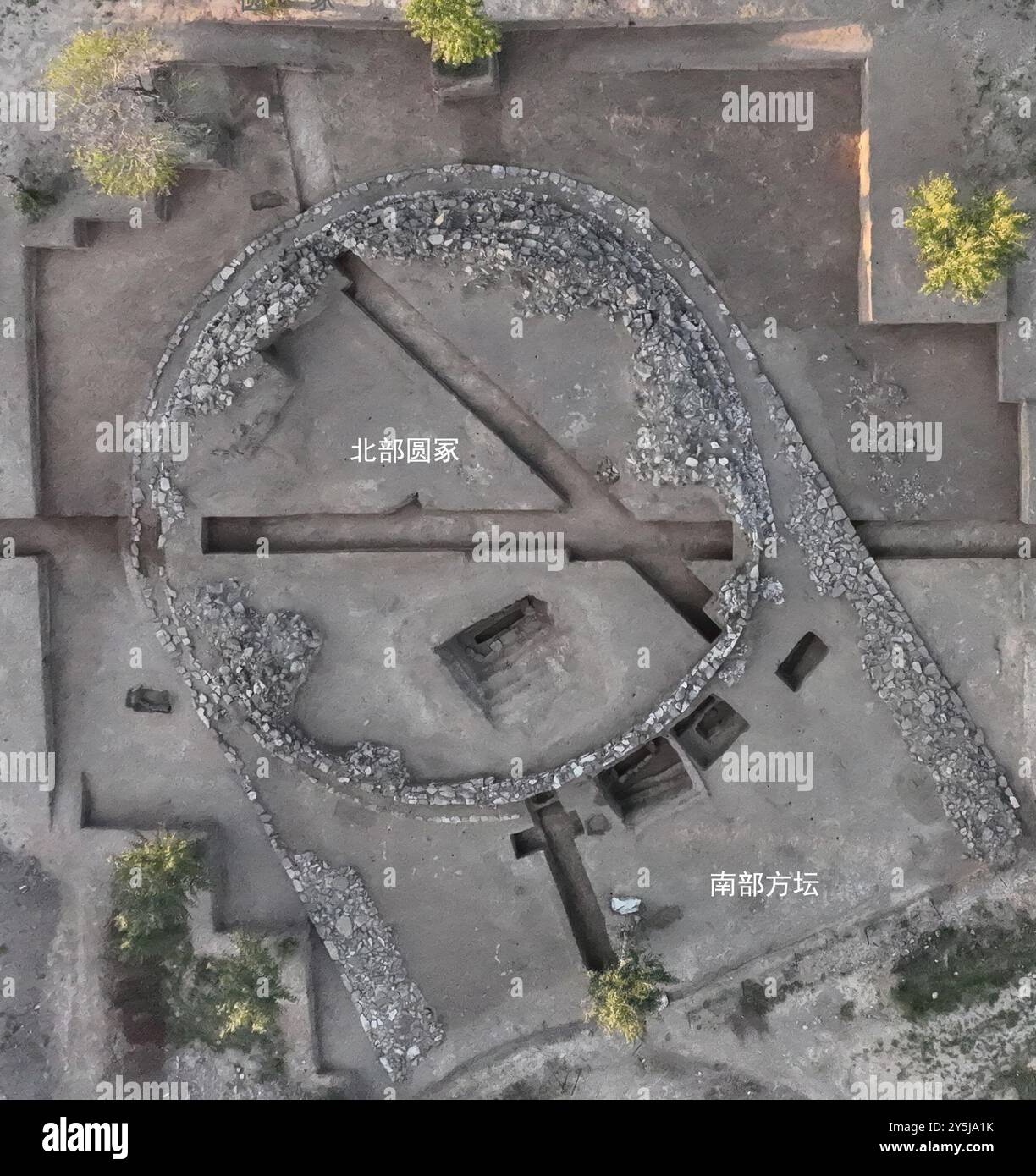 (240922) -- CHIFENG, Sept. 22, 2024 (Xinhua) -- This undated file photo shows the general view of a stone tomb site in the city of Chifeng, north China's Inner Mongolia Autonomous Region. Chinese archaeologists have unearthed the largest jade dragon ever discovered from the Hongshan culture, an important part of the Neolithic Age, at a stone tomb site in the city of Chifeng, north China's Inner Mongolia Autonomous Region, according to the regional institute of cultural relics and archaeology. Measuring 15.8 cm long, 9.5 cm wide, and 3 cm thick, the artifact was found at a site featuring a ci Stock Photohttps://www.alamy.com/image-license-details/?v=1https://www.alamy.com/240922-chifeng-sept-22-2024-xinhua-this-undated-file-photo-shows-the-general-view-of-a-stone-tomb-site-in-the-city-of-chifeng-north-chinas-inner-mongolia-autonomous-region-chinese-archaeologists-have-unearthed-the-largest-jade-dragon-ever-discovered-from-the-hongshan-culture-an-important-part-of-the-neolithic-age-at-a-stone-tomb-site-in-the-city-of-chifeng-north-chinas-inner-mongolia-autonomous-region-according-to-the-regional-institute-of-cultural-relics-and-archaeology-measuring-158-cm-long-95-cm-wide-and-3-cm-thick-the-artifact-was-found-at-a-site-featuring-a-ci-image623049551.html
(240922) -- CHIFENG, Sept. 22, 2024 (Xinhua) -- This undated file photo shows the general view of a stone tomb site in the city of Chifeng, north China's Inner Mongolia Autonomous Region. Chinese archaeologists have unearthed the largest jade dragon ever discovered from the Hongshan culture, an important part of the Neolithic Age, at a stone tomb site in the city of Chifeng, north China's Inner Mongolia Autonomous Region, according to the regional institute of cultural relics and archaeology. Measuring 15.8 cm long, 9.5 cm wide, and 3 cm thick, the artifact was found at a site featuring a ci Stock Photohttps://www.alamy.com/image-license-details/?v=1https://www.alamy.com/240922-chifeng-sept-22-2024-xinhua-this-undated-file-photo-shows-the-general-view-of-a-stone-tomb-site-in-the-city-of-chifeng-north-chinas-inner-mongolia-autonomous-region-chinese-archaeologists-have-unearthed-the-largest-jade-dragon-ever-discovered-from-the-hongshan-culture-an-important-part-of-the-neolithic-age-at-a-stone-tomb-site-in-the-city-of-chifeng-north-chinas-inner-mongolia-autonomous-region-according-to-the-regional-institute-of-cultural-relics-and-archaeology-measuring-158-cm-long-95-cm-wide-and-3-cm-thick-the-artifact-was-found-at-a-site-featuring-a-ci-image623049551.htmlRM2Y5JA1K–(240922) -- CHIFENG, Sept. 22, 2024 (Xinhua) -- This undated file photo shows the general view of a stone tomb site in the city of Chifeng, north China's Inner Mongolia Autonomous Region. Chinese archaeologists have unearthed the largest jade dragon ever discovered from the Hongshan culture, an important part of the Neolithic Age, at a stone tomb site in the city of Chifeng, north China's Inner Mongolia Autonomous Region, according to the regional institute of cultural relics and archaeology. Measuring 15.8 cm long, 9.5 cm wide, and 3 cm thick, the artifact was found at a site featuring a ci
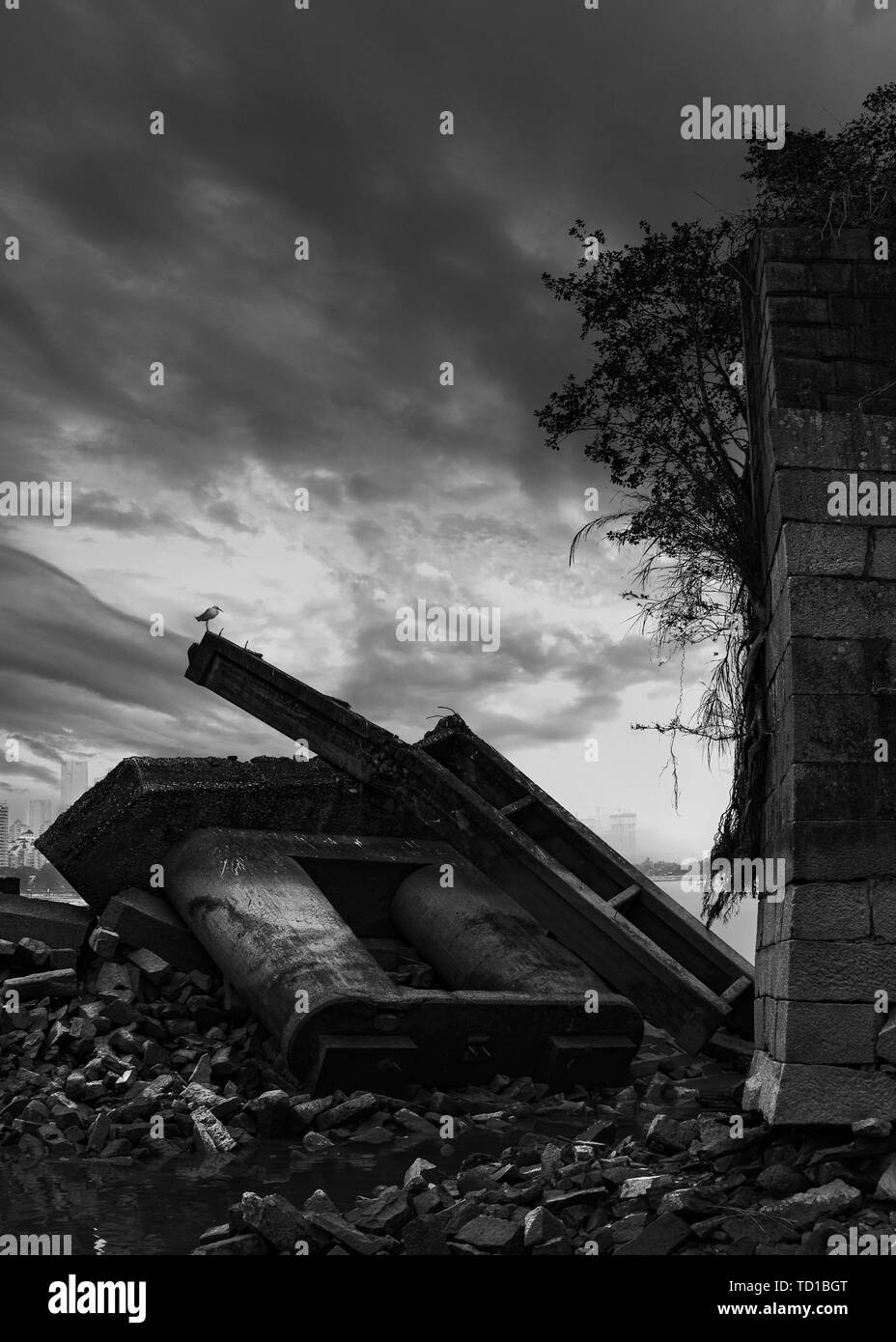 Broken Bridge - Hongshan Ancient Bridge on the Minjiang River, in 1985, after the birth of the new bridge, the ancient pier was removed to protect the riverbed, avoiding the fate of being blown up. In 2005, after Typhoon Dragon King crossed the border, eight piers were destroyed, and now there are only 16 left, becoming a broken bridge. Stock Photohttps://www.alamy.com/image-license-details/?v=1https://www.alamy.com/broken-bridge-hongshan-ancient-bridge-on-the-minjiang-river-in-1985-after-the-birth-of-the-new-bridge-the-ancient-pier-was-removed-to-protect-the-riverbed-avoiding-the-fate-of-being-blown-up-in-2005-after-typhoon-dragon-king-crossed-the-border-eight-piers-were-destroyed-and-now-there-are-only-16-left-becoming-a-broken-bridge-image248966728.html
Broken Bridge - Hongshan Ancient Bridge on the Minjiang River, in 1985, after the birth of the new bridge, the ancient pier was removed to protect the riverbed, avoiding the fate of being blown up. In 2005, after Typhoon Dragon King crossed the border, eight piers were destroyed, and now there are only 16 left, becoming a broken bridge. Stock Photohttps://www.alamy.com/image-license-details/?v=1https://www.alamy.com/broken-bridge-hongshan-ancient-bridge-on-the-minjiang-river-in-1985-after-the-birth-of-the-new-bridge-the-ancient-pier-was-removed-to-protect-the-riverbed-avoiding-the-fate-of-being-blown-up-in-2005-after-typhoon-dragon-king-crossed-the-border-eight-piers-were-destroyed-and-now-there-are-only-16-left-becoming-a-broken-bridge-image248966728.htmlRFTD1BGT–Broken Bridge - Hongshan Ancient Bridge on the Minjiang River, in 1985, after the birth of the new bridge, the ancient pier was removed to protect the riverbed, avoiding the fate of being blown up. In 2005, after Typhoon Dragon King crossed the border, eight piers were destroyed, and now there are only 16 left, becoming a broken bridge.